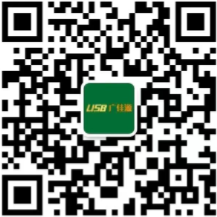 Mr. Chen:136-6225-2835
Mr. Chen:136-6225-2835
 Miss Chen:189-2385-0895
Miss Chen:189-2385-0895
Shenzhen Guangjiayuan Electronic Technology Co., Ltd
Mr. Chen: 136-6225-2835 (same WeChat account)
QQ: 979285705
Miss Chen: 189-2385-0895 (same WeChat account)
QQ: 2391552662
Chen Weiting :135-3824-4786 (same WeChat account)
Chen Weihao: 139-2459-4393 (same WeChat account)
Tel: 86-0755-33182327
Email: gjydz88@163.com
Website: www.usb-type.com
Address: Building 10, Hongxing Gebu Qixiang, Songgang Town, Bao'an District, Shenzhen, Guangdong Province
The current intelligent terminal market has formed a pattern dominated by USB C interfaces, with multiple interfaces and charging technologies coexisting. After users replace their devices, most of the original chargers and data cables are idle, causing huge waste. Vigorously promoting charging interface and Technological convergence is conducive to reducing Electronic waste and improving resource utilization efficiency. It is not difficult to see that the country is already promoting the reform of charging interfaces. Some time ago, Ding Lei, CEO of NetEase, suggested to the Ministry of Industry and Information Technology that "the standard port of intelligent electronic device charger should be unified to further reduce Electronic waste to help carbon neutrality." In the future, the unification of USB type-c is irresistible.

USB type-c is the specification for USB connector systems, which are becoming increasingly popular on smartphones and mobile devices, and can be used for power and data transmission. USB C is a relatively new standard, with the current version being USB 4. The USB 4 specification uses dual link channels, with a transmission bandwidth of up to 40Gbps and a power output of up to 240W. These features can make USB C the true universal connection standard for modern devices.

The signal diagram of the main functions of the USB type-c connector has 24 pins. Figures 1 and 2 show the pins of the USB type-c socket and plug, respectively.

usb type-c的PCB设计布线要求

The USB type-C power supply and backup mode use standard devices that can be negotiated and selected for appropriate power through interfaces. These power negotiations are achieved through a protocol called USB Power Delivery, which is a single line communication on the CC line above. The following figure shows an example of USB power supply, where the receiver sends a request to the source and adjusts the VBUS voltage as needed. Firstly, a 9 V bus is required. After the source stable bus voltage reaches 9 V, it will send a "power ready" message to the receiver. Then, the receiver requests a 5V bus, and the source provides it and sends a "power ready" message again. It is worth noting that "USB power supply" not only involves negotiations related to power supply, but other negotiations, such as negotiations related to standby mode, are completed using the power supply protocol on the standard CC line.

The CC1 and CC2 pins of the USB type-c are channel configuration pins. They perform many functions, such as cable connection and removal detection, socket/plug direction detection, and current broadcasting. These pins can also be used for communication required for Power Delivery and Alternate Mode. The following figure shows how the CC1 and CC2 pins display the direction of the socket/plug. In this figure, DFP represents the downstream facing port, which serves as the host or power supply in data transmission. UFP represents upstream facing ports, which are devices connected to hosts or power consumers. DFP pulls CC1 and CC2 pins up through the Rp resistor, but UFP pulls them down through Rd. If there is no cable connected, the source sees a logic high level at the CC1 and CC2 pins. Connecting a USB type-c cable can create a current path from a 5V power supply to ground. Due to the fact that there is only one CC line inside the USB type-c cable, only one current path is formed. For example, in the figure, the CC1 pin of DFP is connected to the CC1 pin of UFP. Therefore, the voltage of DFP CC1 pin is lower than 5V, but DFP CC2 pin is still at the logic high level. Therefore, by monitoring the voltage on the DFP CC1 and CC2 pins, we can determine the cable connection and its direction.
In addition to the cable direction, the Rp-Rd path is also used as a means of transmitting source current capability information. For this purpose, the power consumption (UFP) monitors the voltage on the CC line. When the voltage on the CC line has its lowest value (approximately 0.41 V), the source can provide default USB power supplies of 500 mA and 900 mA for USB 2.0 and USB 3.0, respectively. When the CC line voltage is approximately 0.92 V, the source can provide a current of 1.5 A. The highest CC line voltage is approximately 1.68 V, corresponding to the source current capability of 3A

The VCONN pin of USB type-c is designed to provide ultra fast data transmission speed and high levels of power. These features may require the use of special cables for electronic labeling through the use of chips internally. In addition, some active cables utilize re driving chips to strengthen signals and compensate for losses caused by cables, etc. In these cases, we can provide power to the VCONN pin by applying a 5V, 1W power supply to the circuit inside the cable. The active cable uses a Ra resistor to pull down the CC2 pin. The value of Ra is different from Rd, so DFP can still determine the cable direction by checking the voltage on DFP CC1 and CC2 pins. After determining the cable direction, the channel configuration pins corresponding to the "active cable IC" will be connected to a 5V, 1W power supply to supply power to the circuits inside the cable. For example, in the following figure, the effective Rp Rd path corresponds to the CC1 pin. Therefore, the CC2 pin is connected to the power supply represented by VCONN.

The SBU1 and SBU2 pins of the USB type-c, as well as the RX and TX pins, SBU1 and SBU2 pins, correspond to the low-speed signal path used only in standby mode.
There are two sets of RX differential pairs and two sets of TX differential pairs for RX and TX pins.
One of these two RX pairs and the TX pair can be used for the USB 3.0/USB 3.1 protocol. Due to the flippable nature of the connector, it is necessary for the multiplexer to correctly reroute the data on the differential pair used through the cable.
Please note that the USB type-C port can support the USB 3.0/3.1 standard, but the minimum feature set of USB type-C does not include USB 3.0/3.1. In this case, the USB 3.0/3.1 connection does not use RX/TX pairs and can be used by other USB type-c functions, such as standby mode and USB power supply protocol. These functions can even utilize all available RX/TX differential pairs.
The power and ground pins VBUS and GND of the USB type-c are the return paths for the power and signal. The default VBUS voltage is 5V, but the standard allows devices to negotiate and choose VBUS voltage instead of the default value. The latest PD3.1 protocol allows VBUS to have a voltage of up to 48V for power transmission, and currently the maximum current of USB 4 can also be increased to 5A. Therefore, USB type-c can provide a maximum power of 240W. High power is useful when charging large devices such as laptops.
The USB 2.0 differential pair D+and D-pins of USB type-c are differential pairs used for USB 2.0 connections. There are two D+pins and two D-pins in the socket. However, these pins are interconnected, and in reality, only one USB 2.0 data differential pair is available for use. Redundant design is only intended to provide flippable connectors.
The type-c related industry chain has attracted much attention, with many advantages such as small and slim size, high-speed transmission, one port multi-purpose for both positive and negative use, and improved power supply. Its popularization will be just around the corner. However, this type c connector product must be used in a limited space to produce more refined and versatile products, and must withstand high currents and high-speed data transmission. Therefore, its technical difficulty requirements are very high, and challenges and opportunities coexist. For enterprises eager to seize the type-c connector market, only by solving technical difficulties can they win customers.
Source: Type-C Intelligence Center
Contact person:
Mr. Chen 136-6225-2835 (same WeChat account)
Miss Chen 189-2385-0895 (same WeChat account)
Chen Weiting 135-3824-4786 (same WeChat account)
Chen Weihao 139-2459-4393 (same WeChat account)
Address:
Building 10, Hongxing Gebu Qixiang, Songgang Town, Bao'an District, Shenzhen, Guangdong Province
 |
 |
| Technology 1 | Technology 2 |